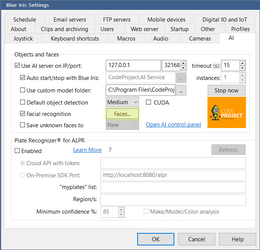- Joined
- Aug 29, 2019
I have been using https://blueirissoftware.com/ for years and it mostly Just Werks.
Its much more flexable and customizable then any consomer cloud or (((subscription))) CCTV systems.
The cameras are all on their own switch that is on the same UPS as the PC running the software. Since the cameras are air gapped from the rest of my network I don't have to worry about the chinky firmware in them phoning home. The PC has 2 NIC's in it. One for the CCTV switch and the other for the internet.
I use Bitvise ssh client to set up a reverse ssh tunnel to a VPS with a static IP so the mobile apps can directly connect to my home server. This cuts through NAT can can deal with my failover to LTE if my hardwired internet is cut.
Blue Iris can also automatically can push the clips via FTP to an offsite server, and also supports emailing clips and alerts. So if they find your home server and smash it the clips will be safe, offsite.
Lately there has been projects interfacing AI and facial recogintion to Blue Iris but I don't know anything about this.

Its much more flexable and customizable then any consomer cloud or (((subscription))) CCTV systems.
The cameras are all on their own switch that is on the same UPS as the PC running the software. Since the cameras are air gapped from the rest of my network I don't have to worry about the chinky firmware in them phoning home. The PC has 2 NIC's in it. One for the CCTV switch and the other for the internet.
I use Bitvise ssh client to set up a reverse ssh tunnel to a VPS with a static IP so the mobile apps can directly connect to my home server. This cuts through NAT can can deal with my failover to LTE if my hardwired internet is cut.
Blue Iris can also automatically can push the clips via FTP to an offsite server, and also supports emailing clips and alerts. So if they find your home server and smash it the clips will be safe, offsite.
Lately there has been projects interfacing AI and facial recogintion to Blue Iris but I don't know anything about this.





